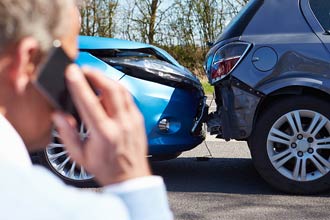
The Role of Distracted Driving in Car Accident Litigation

How Serious Is the Problem of Distracted Driving?
Distracted driving remains one of the most pervasive threats to road users today. It is a modern epidemic and a significant public safety crisis that claimed 3,308 lives in 2022, as reported by the National Highway Traffic Safety Administration (NHTSA). Driver distraction abounds in Colorado, with its bustling urban centers and scenic mountain views. When negligence leads to harm, personal injury litigation can be pivotal in seeking justice and compensation.
What Qualifies as Distracted Driving?
Distracted driving is engaging in any activity that diverts the driver’s attention from operating the vehicle. Distractions fall into the following three main categories:
- Visual distraction: This includes anything that takes the driver’s eyes off the road, such as reading a text message, looking at a GPS, or “rubbernecking” at an accident scene.
- Manual distraction: This category involves removing the hands from the steering wheel, such as texting, eating, drinking, grooming, or adjusting the radio.
- Cognitive distraction: Anything that pulls the driver’s attention away from driving is a cognitive distraction. Examples include talking on the phone, conversing with passengers, daydreaming, or stressing about situations behind the wheel.
What Are the Laws Against Distracted Driving in Colorado?
Our state has taken steps to address the problem of distracted driving, although enforcement remains a challenge. Under the Colorado Revised Statutes, Section 42-4-239, texting and all other forms of manual data entry and transmission on wireless phones are prohibited while driving for persons of any age. Drivers under 18 are prohibited from using a cell phone while driving. Exceptions apply in both cases when the driver is using a mobile phone in an emergency or to contact a public safety entity.
Colorado’s modified comparative negligence laws also come into play. Under the Colorado Revised Statutes Section 13-21-111, an injured party may recover damages provided his or her negligence is not as great as the negligence of the party from whom damages are sought. In addition, the amount of the victim’s recovery is reduced by the percentage of fault for the accident assigned to them. Proving negligence is critical to secure compensation for a distracted driving accident.
What Are the Consequences of Distracted Driving?
Driver distraction creates a significant potential for injury and death on the roadways. Distracted driving accidents can leave victims with severe injuries, damaged vehicles, and shattered lives. The financial repercussions can be overwhelming. They may include lost wages, shockingly expensive medical bills, and the need for long-term care or rehabilitation. Beyond the tangible losses, serious car accidents can take a heavy emotional toll on victims and their loved ones. A knowledgeable car accident lawyer can help victims and their families pursue justice, holding responsible parties accountable and securing the compensation needed to rebuild their lives.
How Do You Build a Case Against a Distracted Driver?
Evidence is everything in car accident litigation. It takes expertise, strategy, and diligence to prove that another driver’s distraction caused the crash. The following are key elements of building a case:
- Evidence collected at the scene: Critical evidence can include photos of the accident site, vehicle damage, physical injuries, a police report detailing citations for prior distracted driving, current observations regarding driver distraction, and eyewitness statements that corroborate the driver’s behavior before the crash.
- Cell phone records: Your attorney can subpoena phone records to reveal if the driver was calling, texting, or using an app during the collision.
- Camera footage: Traffic camera footage, business surveillance, or dashcam footage may capture the behavior of the at-fault driver leading up to the accident.
- Digital forensics and social media: Social media engagement by a distracted driver during the crash could provide additional proof of negligence.
- Expert testimony: An accident reconstruction specialist can analyze the evidence and demonstrate that the accident resulted from driver distraction. Medical experts can testify regarding the extent and long-term impact of the injuries.
What Are the Challenges of Distracted Driving Litigation?
Drivers rarely admit to being distracted, and proving it requires thorough investigation. Unlike DUI, with clear-cut blood alcohol levels, distraction can be more difficult to quantify. Insurance companies are notorious for arguing that the victim shares fault for the accident to minimize their payouts. Colorado’s comparative negligence system tends to amplify this tactic. For all the above reasons, it is essential that distracted driving accident victims have skilled legal representation.
How Can an Experienced Car Accident Lawyer Help?
After a serious distracted driving accident, our experienced Denver personal injury attorneys can provide clarity and support through every step of the process. We bring the knowledge, skills, and resources necessary to level the playing field against insurance companies and their legal defense teams. We can help you pursue justice in the following ways:
- Thoroughly investigating the accident to determine liability and potential compensation
- Collecting and preserving evidence to support your claim
- Negotiating skillfully with insurance companies on your behalf, countering lowball offers and advocating for fair compensation
- Building and presenting a compelling case at trial if a fair settlement cannot be reached
Why Choose Our Firm?
Our mission at Born & McCaffery, PC, is to provide personalized attention and exceptional legal representation to every client we serve. Our dedicated Colorado personal injury attorneys consistently deliver outstanding results in car accident claims and lawsuits. We have extensive experience and a wealth of knowledge in a range of personal injury matters. Contact us at 719-416-4246 for the skilled representation you need after a car accident caused by a distracted driver.





